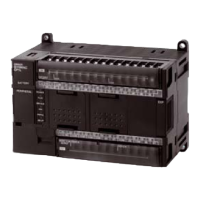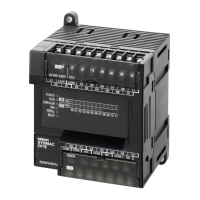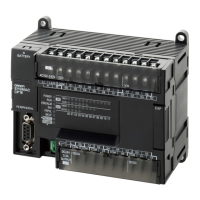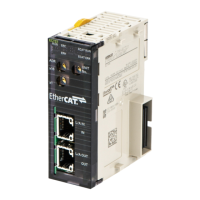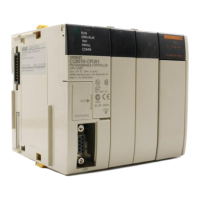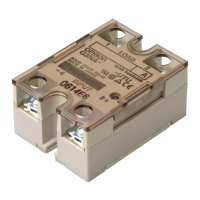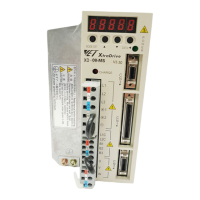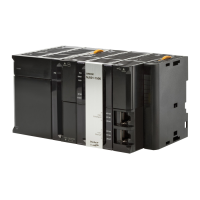39
Function Blocks Section 1-5
1-5 Function Blocks
In the SYSMAC CP Series, function blocks can be used in programming just
as in the CS/CJ Series.
1-5-1 Overview of Function Blocks
A function block is a basic program element containing a standard processing
function that has been defined in advance. Once the function block has been
defined, the user just has to insert the function block in the program and set
the I/O in order to use the function.
As a standard processing function, a function block is not created with actual
physical addresses, but local variables. The user sets parameters (addresses
or values) in those variables to use the function block. The addresses used for
the variables themselves are automatically assigned by the system (CX-Pro-
grammer) each time they are placed in the program.
In particular, each function block is saved by the CX-Programmer as an indi-
vidual file that can be reused with programs for other PLCs. This makes it pos-
sible to create a library of standard processing functions.
1-5-2 Advantages of Function Blocks
Function blocks allow complex programming units to be reused easily. Once
standard program sections have been created as function blocks and saved in
files, they can be reused just by placing a function block in a program and set-
ting the parameters for the function block's I/O. Reusing standardized function
blocks reduces the time required for programming/debugging, reduces coding
errors, and makes programs easier to understand.
Structured
Programming
Structured programs created with function blocks have better design quality
and required less development time.
ccaa
bb
#0000
MOV
dd
Standard program
section written
with variables
Function block A
Define in advance.
Insert in program.
Save function
block as file.
Library
Function
block A
Reuse
To another PLC program
Program 1
Copy of function block A
Input
Variable Variable Output
Setting Setting
Copy of function block A
Input
Variable Variable Output
Program 2
Copy of function block A
Variable Output
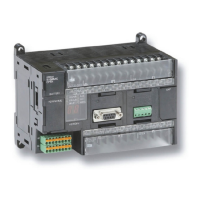
